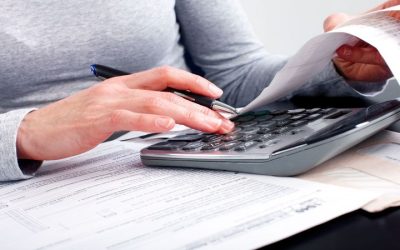When it comes to improving the sustainability of commercial buildings, many business owners are unaware of the financial incentives available to them. One such incentive is the Energy Efficient Commercial Buildings Deduction, a tax provision that can significantly reduce the costs associated with upgrading to energy-efficient systems. This article explores the benefits of the deduction, how to qualify, and what improvements can be made to unlock these savings.
What Is the Energy Efficient Commercial Buildings Deduction?
The Energy Efficient Commercial Buildings Deduction is a federal tax incentive offered under Section 179D of the Internal Revenue Code. This deduction allows business owners, building owners, or designers (such as architects and engineers) to receive tax benefits for implementing energy-efficient improvements in commercial buildings. It encourages energy savings by providing financial incentives for upgrades like lighting, HVAC systems, and building envelopes (such as insulation and windows) that meet certain energy efficiency standards.
The purpose of this deduction is to promote energy conservation in commercial properties and reduce the overall environmental impact of buildings. It also provides an opportunity for businesses to save money by reducing their taxable income. Depending on the efficiency measures, the deduction can range from hundreds to thousands of dollars, making it a highly valuable tool for businesses looking to enhance their energy efficiency.
Key Criteria for Qualifying for the Deduction
To qualify for the Energy Efficient Commercial Buildings Deduction, there are specific criteria that businesses must meet. These requirements are intended to ensure that only buildings with substantial energy efficiency improvements are eligible. Here’s a breakdown of the major factors involved:
- Eligible Properties: The deduction applies to commercial buildings and their associated systems. This includes retail stores, office buildings, industrial facilities, and even certain types of government buildings.
- Energy Efficiency Standards: The improvements made to the building must meet the minimum energy efficiency standards set by the IRS. These standards are typically based on the energy consumption of the building compared to a baseline level. Improvements must result in a significant reduction in energy usage to qualify for the deduction.
- Qualified Improvements: The improvements eligible for the deduction fall into three main categories:
- Interior Lighting Systems: Upgrades to lighting systems that meet the required energy efficiency specifications can yield substantial tax benefits.
- HVAC and Water Heating Systems: Efficient HVAC (heating, ventilation, and air conditioning) and water heating systems are crucial for reducing energy consumption and improving comfort levels within buildings.
- Building Envelope: Improvements to a building’s envelope, including insulation, windows, and doors, can significantly impact a building’s energy efficiency.
- Certification Requirement: To claim the deduction, building owners or designers must have their energy-efficient improvements certified by a qualified professional. This often involves a detailed energy audit to verify the energy savings achieved by the upgrades.
Why Pursue the Energy Efficient Commercial Buildings Deduction?
There are numerous reasons why business owners should consider pursuing the Energy Efficient Commercial Buildings Deduction:
- Tax Savings: The most obvious benefit is the potential for significant tax deductions. These savings can help offset the initial investment in energy-efficient upgrades, making it easier to recoup costs over time.
- Energy Cost Reduction: Beyond tax incentives, energy-efficient upgrades often lead to long-term savings on energy bills. By reducing energy consumption, businesses can lower their operating costs, which is especially important for businesses in industries with high energy demands.
- Environmental Benefits: Making energy-efficient improvements reduces a building’s carbon footprint, contributing to environmental sustainability. With increasing focus on climate change and environmental responsibility, businesses that take proactive steps to reduce their energy usage can enhance their reputation as environmentally conscious organizations.
- Increased Property Value: Buildings with modern, energy-efficient systems often have a higher market value, making them more attractive to potential buyers or tenants. This can be particularly beneficial for property owners who are looking to sell or lease their buildings.
The Energy Efficient Commercial Buildings Deduction provides a valuable opportunity for businesses to invest in energy-efficient upgrades while benefiting from tax savings. By making qualifying improvements to lighting, HVAC systems, and building envelopes, businesses can significantly reduce their energy costs, improve their environmental impact, and enhance their financial standing. As energy efficiency continues to be a key priority in both the private and public sectors, this deduction serves as a powerful incentive for building owners and designers to embrace sustainable practices and reap the financial rewards.


